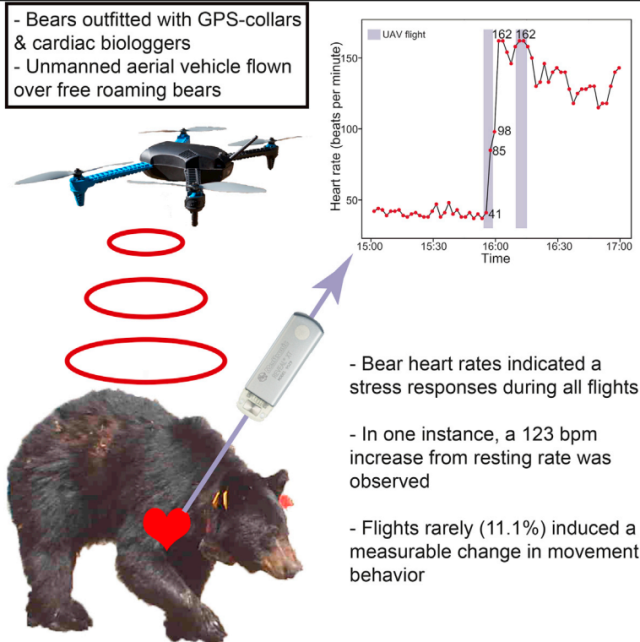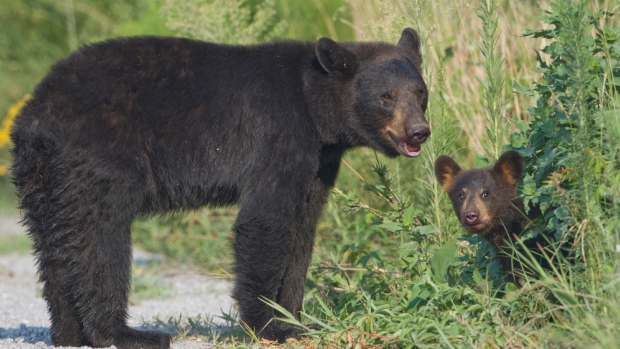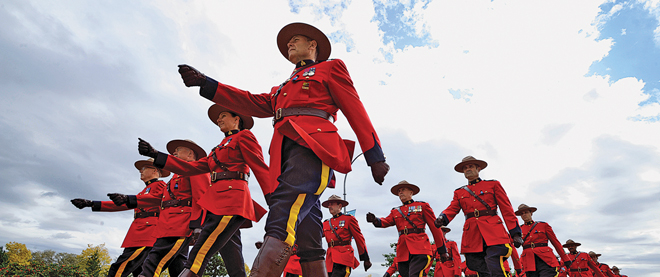OTTAWA—Two years ago, photographer Steve Wambolt pitched Ottawa city councilors on a plan to use his drone to take aerial shots of Ottawa. Councilor Bob Monette leaned over with a question: Can that thing be used to chase Canada geese?
“I’m sitting in my suit thinking, this guy is nuts,” Mr. Wambolt said.
But the answer to that question turned out to be yes. Mr. Wambolt’s drone has succeeded where years of sound decoys, dogs and sickly-tasting compounds failed, ridding the city beach on Petrie Island of a goose that can drop 2 pounds of poop a day.
Now Mr. Wambolt has big ambitions. He wants to clear Canada’s capital of the Canada goose, by creating a squadron of drones to be flown from strategic stations around Ottawa.
That could ruffle feathers in a country with a highly conflicted view of the goose to which it has given its name. While reviled for its ability to defecate every 20 minutes, Branta Canadensis is often seen here as a hardy survivor whose noisy migration home in the spring sounds the welcome end of another long winter.
Some Canadians are even leaning toward naming this goose its “national bird,” in the same way the U.S. has the Bald Eagle. The Royal Canadian Geographical Society is currently asking Canadians to choose a national bird by voting online, and plans to lobby the government to make the winner part of national celebrations in 2017 marking 150 years of the country’s confederation.
“Among the first to arrive in spring, and last to leave in winter, they mate for life and both parents share in raising their young,” Canadian novelist Will Ferguson wrote, praising the Canada goose’s loyalty on the geographical society’s website.
“If I’m going to be chased through a public park anyway, I would rather it be by a national emblem,” said Mr. Ferguson, who has written humorous books on Canadian culture.
The prospect of the goose winning the title leaves Mr. Wambolt with a tough pitch: Chasing what could be the national bird out of the nation’s capital.
On a recent visit to Petrie Island, Mr. Wambolt pointed to the rationale for his pitch, the spotless grass.
“I’ll give you a dollar for every piece of poop you find,” he said. “Last year, you couldn’t even walk here for it.”
For Petrie Island park janitor André Killeen, Mr. Wambolt’s drone couldn’t have been more welcome. It had been Mr. Killeen’s job to clean up after the 300-odd geese that used to gather on this beach.
“It doesn’t break well, it just smears,” he said. “That drone has been remarkably efficient.”
The Goosebuster, as Mr. Wambolt calls his drone, is 26 inches wide with six rotors. It has a number of modifications, including speakers that blast the sounds of predator birds, such as eagles, hawks and buzzards, a strobe light and a coat of black paint.
“They don’t like the color black,” he said.
The Goosebuster comes as the North American goose population, once in decline, is on the rise. The U.S. government’s Fish and Wildlife Service estimated that last year there were at least 4.8 million Canada geese in North America.
The geese thrive among the manicured lawns of the golf courses and public spaces that they like to graze upon. Left unchecked, urban goose populations can double in size every few years, according to the City of Ottawa.
Mission accomplished on Petrie, Mr. Wambolt is now setting his sights on fresh—albeit soiled—fields.
At Andrew Haydon Park, on the other side of the city, Mr. Wambolt moved stealthily over the rolling lawns clutching his drone.
“What we are looking for is footprints and goose poop,” he said. Within minutes, this former Canadian soldier had spotted an abundance of both. He shook his head in disgust at the piles of poop covering both path and grass.
Soon, Mr. Wambolt spotted a gaggle of geese heading out of the Ottawa River. “Look at that big mama sitting in the middle of them,” he said.
Mr. Wambolt set his drone to the sound of an eagle and flew it up over the geese, sending them fleeing, honking, back toward the river. In repeated flybys, it took only minutes for Mr. Wambolt to herd the entire flock back into the river.
Ridding the parks of the droppings isn’t just about aesthetics, Mr. Wambolt and others say. The waste can contain bacteria ranging from E. coli to listeria and pose a health risk to the children who frequent city parks.
Denise Clarke says her young grandchildren no longer want to come to Andrew Haydon Park, fearful of aggressive geese and their slippery excrement. Canada geese will occasionally attack people when they feel their family is under threat.
“I hope it works,” she said, looking at Mr. Wambolt’s Goosebuster.
Not everybody in the park is a fan of the Goosebuster. Linda Hay had been photographing the “big mama” before Mr. Wambolt’s drone chased it off. The bird was actually a Brant goose from the Arctic, one of 69 different bird species in Andrew Haydon Park, Ms. Hay said.
“They are beautiful, and if you scare the geese, you will scare everything else away,” she said.
Recently, Mr. Wambolt wrote up a proposal to clear all of Ottawa’s parks of geese and submitted it to the city council. But it faces opposition, including from the city councilor, Mr. Monette, who first suggested using the drone to target geese. “I don’t think anybody wants to get rid of them, period,” Mr. Monette said.
In Andrew Haydon Park, Mr. Wambolt’s appearance continued to generate debate among gathering birders about whether the goose was worthy of being a national symbol.
“No, no, no,” said Roy John, a member of the Monday Morning Birders Club. “The Black-capped Chickadee is cheerful in all weathers, it’s tame, it’s friendly, it’s very Canadian,” he said.
The birders’ arrival at the park had sent Mr. Wambolt back to his car, much as he had sent the geese back into the river.
Asked why not the goose for national bird, Mr. John pointed to a path caked in its fecal matter: “Canada geese are everywhere in Canada.”
—Paul Vieira contributed to this article.
http://www.wsj.com/articles/canadians-find-another-use-for-drones-chasing-geese-1439510869








